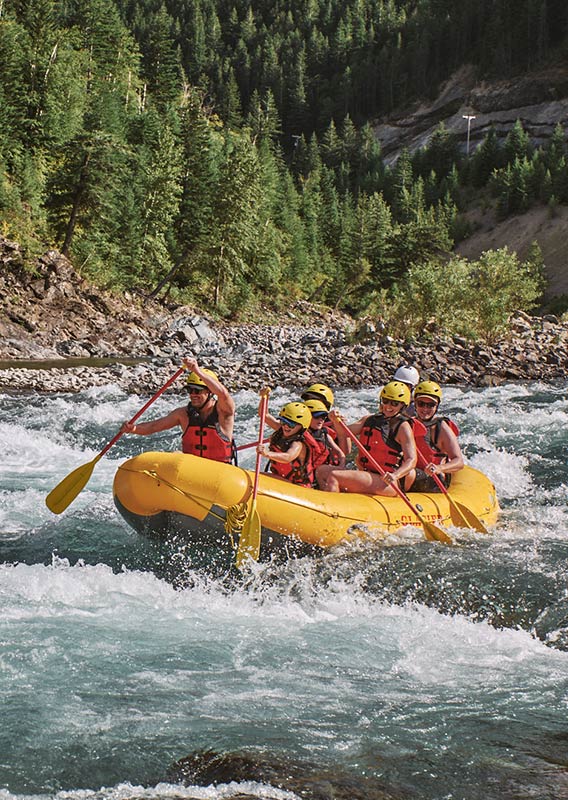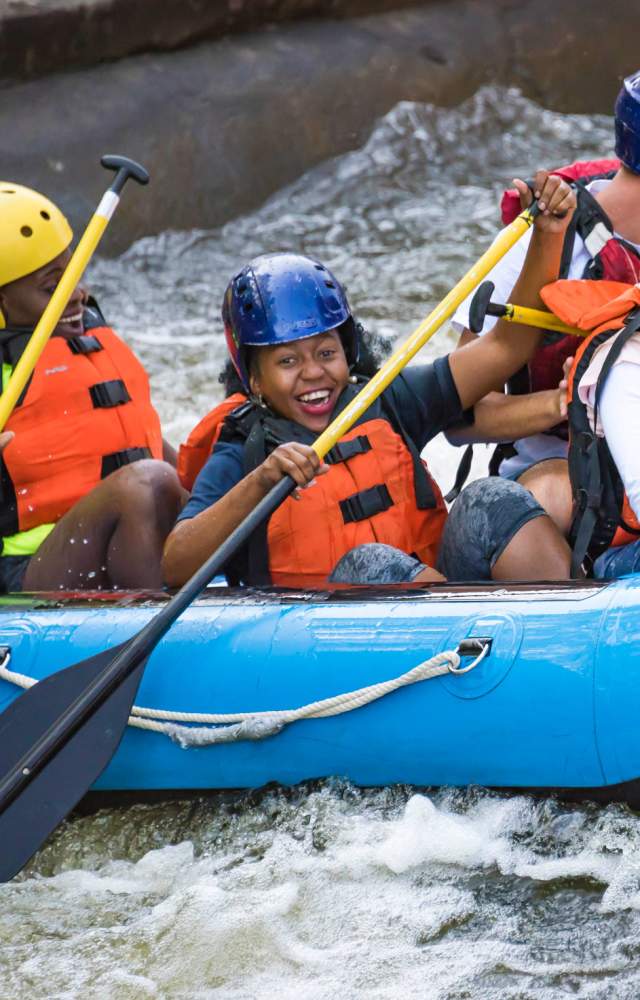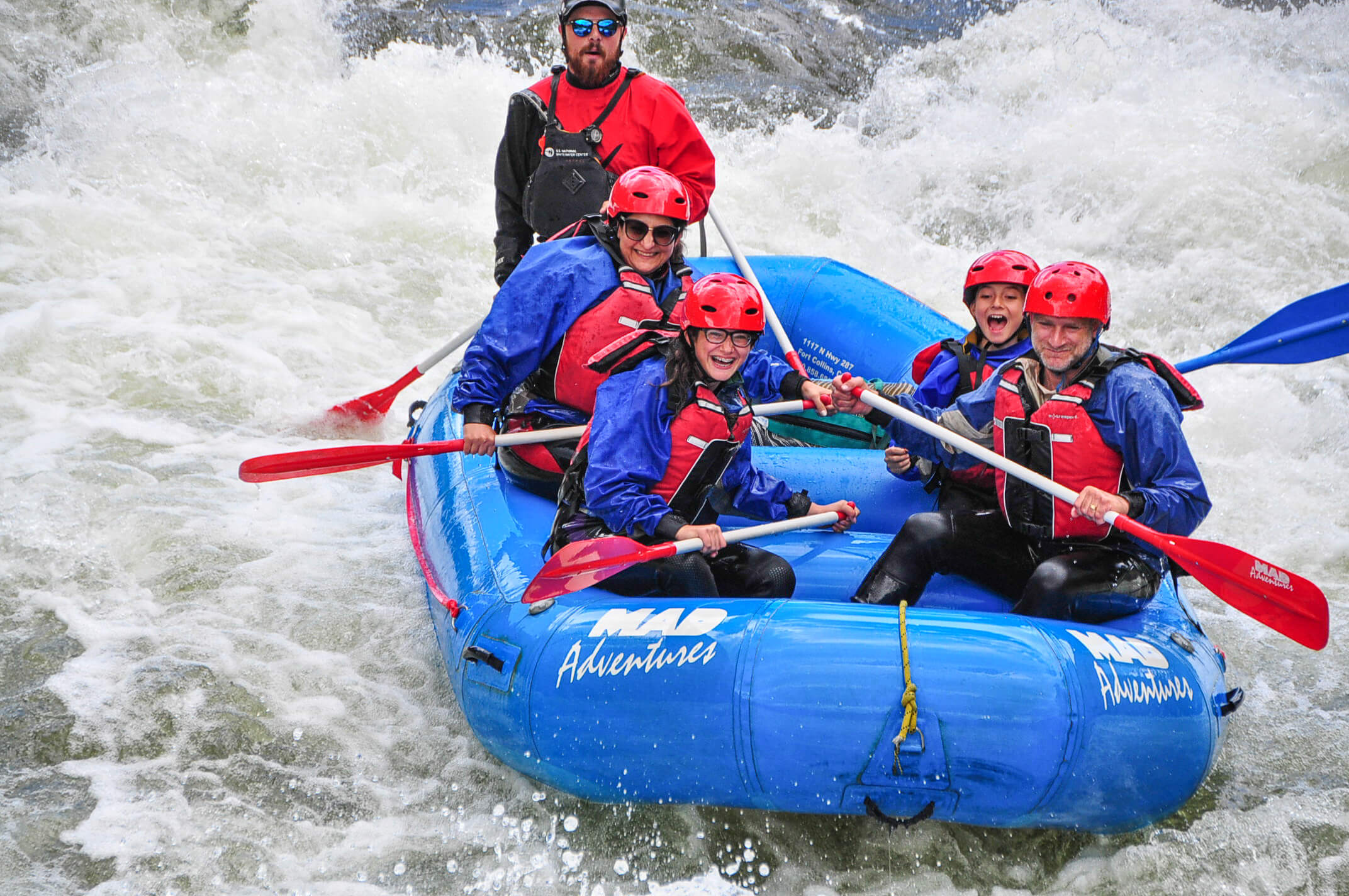The Ultimate Journey: Water Rafting Advice
Embarking on a water rafting adventure is an awesome experience that requires a blend of skill, prep work, and respect for nature's powerful forces (White Water Rafting Colorado). As the rush of the river drives you ahead, navigating through spins and turns, the art of water rafting unveils itself as a test of both physical expertise and mental skill. From choosing the suitable gear to comprehending the nuances of paddling strategies, the trip down the river holds obstacles and triumphs waiting to be overcome. What absolutely establishes apart a newbie from a seasoned rafter lies not simply in the mastery of abilities, but in the skill with which one approaches the uncertain dance with the currents.
Crucial Gear for Water Rafting
To make sure safety and security and convenience throughout water rafting excursions, it is critical to equip oneself with the essential gear tailored to this adventurous task. Additionally, a durable safety helmet is necessary to secure versus head injuries, specifically in harsh waters or if thrown off the boating.
In addition, correct shoes is essential for keeping excellent grasp and securing the feet from unsafe surface areas or sharp rocks. Neoprene booties or water shoes are suggested for this function. It is additionally advisable to wear quick-drying clothes, such as a wetsuit or rash guard, to control body temperature and avoid hypothermia in chilly water conditions.
Lastly, a dependable paddle is needed for steering via the water successfully. It should be light-weight yet sturdy to stand up to the roughness of rafting. By purchasing these necessary pieces of equipment, rafters can enjoy their experience on the water with self-confidence and assurance.
Selecting the Right Rafting Course
When intending a water rafting journey, choosing the suitable rafting course is important for a safe and enjoyable experience. Variables such as the level of problem, water conditions, and the size of the route should all be thought about prior to getting started on your journey.
Firstly, assess your group's ability degree and experience. Different rafting routes are categorized based upon difficulty levels varying from Class I (very easy) to Course VI (incredibly difficult and hazardous) It is necessary to choose a route that aligns with the abilities of all individuals to make certain everyone's safety and enjoyment.
Furthermore, consider the water problems of the course. Some routes might have calm waters appropriate for novices, while others may have strong currents and difficult rapids that need advanced abilities. Looking into the water degrees and possible threats of the course ahead of time can assist you make a notified choice.
Last but not least, take into consideration the length of the rafting path. Longer paths may require more time and stamina, so choose a route that fits within your team's timeframe and physical capabilities. By carefully choosing the right rafting route, you can set on your own up for a unforgettable and exhilarating experience on the water.
Safety Safety Measures on the Water
Taking into consideration the importance of picking the right rafting route for a secure and delightful experience, it is important to focus on security precautions on the water to minimize possible dangers and make sure a successful adventure. Prior to starting a water rafting trip, make certain all individuals wear properly suitable individual flotation tools (PFDs) and safety helmets to protect versus mishaps. It is critical to pay attention attentively to the overview's security instruction, which typically covers paddling strategies, what to do in situation the raft turns, and how to aid others if Check Out Your URL needed. Preserving communication with the overview and fellow rafters is vital throughout the trip to collaborate movements and respond without delay to any kind of directions or signals. In case of a person falling crazy, follow the overview's instructions for swift and effective rescue treatments. Be mindful of the water problems, such as rapids and barriers, and adapt your paddling techniques as necessary to navigate securely through the program. By sticking to these safety preventative measures, you can boost the total experience and decrease prospective hazards while water rafting.
Mastering Paddling Strategies
Creating effectiveness in paddling strategies is important for navigating via differing water problems and making certain an effective water rafting experience. White Water Rafting Colorado. Proper paddling not only aids in guiding the raft effectively but also adds to the general sychronisation and team effort required for a delightful and safe trip
This stroke entails dipping the paddle blade fully into the water and drawing it back together with the raft, supplying propulsion and steering. By understanding the forward and backward strokes, rafters can successfully regulate the rate and instructions of the plethora.

Tips for Handling Rapids Like a Pro
To stand out in browsing challenging river problems, proficient water rafters apply their mastered paddling techniques with precision and skill when managing rapids like experienced professionals. This rhythm helps the plethora keep its course and security amidst the unstable waters.

Verdict
In verdict, water rafting needs important gear, careful course option, security precautions, understanding paddling strategies, and managing rapids with proficiency. By following these techniques and suggestions, adventurers can make certain a successful and enjoyable rafting experience on click here to find out more the water.

Taking into consideration the importance of selecting the best my sources rafting route for a satisfying and secure experience, it is essential to focus on safety preventative measures on the water to mitigate possible threats and guarantee an effective journey. Eventually, refining paddling techniques is vital to a successful and exhilarating water rafting adventure.
In final thought, water rafting calls for crucial equipment, careful route choice, safety and security preventative measures, grasping paddling methods, and handling rapids with competence.